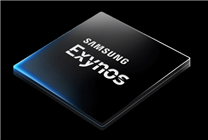### Summary:
– Prices for the RTX 50 series have stabilized closer to MSRP in the US, except for the RTX 5090, which remains significantly elevated.
– The RX 9070 series shows a minor premium in the US and has dropped in price in Europe.
– In China, both the RTX 5090D and RX 9070 XT command high premiums, reflecting strong demand.
—
### Current Graphics Card Pricing Trends: RTX 50 and RX 9000 Series
As of September 21, recent insights from market analysis have highlighted significant trends in the pricing of the RTX 50 and RX 9000 series graphics cards within key global markets, specifically in the United States, Europe, and China.
#### United States Market Overview
In the United States, the pricing landscape for the RTX 50 series has largely reverted to the Manufacturer’s Suggested Retail Price (MSRP). The only notable exception is the RTX 5090, which remains aggressively priced between $2,400 and $2,700—reflecting a premium of about 20%. Meanwhile, the RX 9070 series exhibits a modest premium of approximately 10%, contributing to continued interest among consumers. Notably, the RX 9060 XT has seen its price decrease significantly.
#### European Market Insights
Turning to Europe, particularly in Germany, consumers observe a similar pattern. The RTX 5090 carries a premium of roughly 17%, priced between 2,370 and 2,600 euros. However, more affordable options within the series, such as the RTX 5070 and RTX 5060 Ti with 16GB, have begun to trend lower in price. Conversely, the RX 9070 series aligns closely with its MSRP, while the RX 9060 XT has even dipped below its initial pricing, now available starting at approximately 330 euros.
#### Pricing in China
In contrast, the Chinese market reveals a starkly different scenario. The specialized versions of the RTX 5090, such as the RTX 5090D and RTX 5090D v2, are priced significantly higher, reaching up to 32,999 yuan—representing one of the highest premiums observed globally. The RX 9070 XT is not far behind in terms of value, with top-end models selling for near 6,000 yuan, reflecting a 20% premium as well.
#### Demand and Market Dynamics
The pricing discrepancies across regions underscore varying levels of demand and supply dynamics. Factors influencing these prices include the competitive landscape, underlying component costs, and consumer sentiment toward high-performance gaming hardware. As enthusiasts and gamers look to invest in powerful graphics solutions, understanding these trends is crucial for making informed purchasing decisions.
### Conclusion
In summary, the graphics card market is undergoing notable fluctuations, with the RTX 50 series and RX 9000 series reflecting unique pricing strategies across different regions. While US prices align closely with expectations and European markets offer competitive options, China’s elevated costs highlight the complexities of global supply chains and consumer demand.
—
Keeping an eye on these trends will aid consumers and investors in navigating the intricate world of graphics card pricing, ensuring they capitalize on opportunities as they arise.









